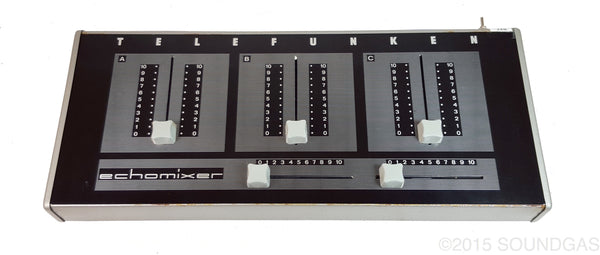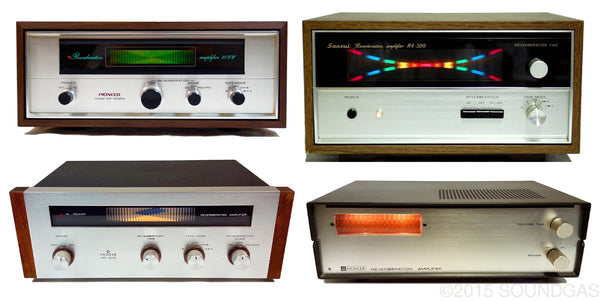Gear Info
Which Vintage Spring Reverb is Best?
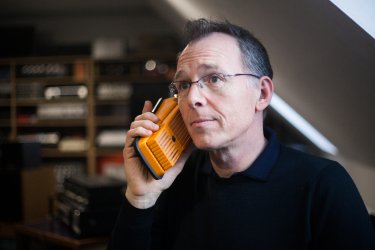
WRITTEN BY: Tony Miln
UPLOADED: 25th Nov 2015
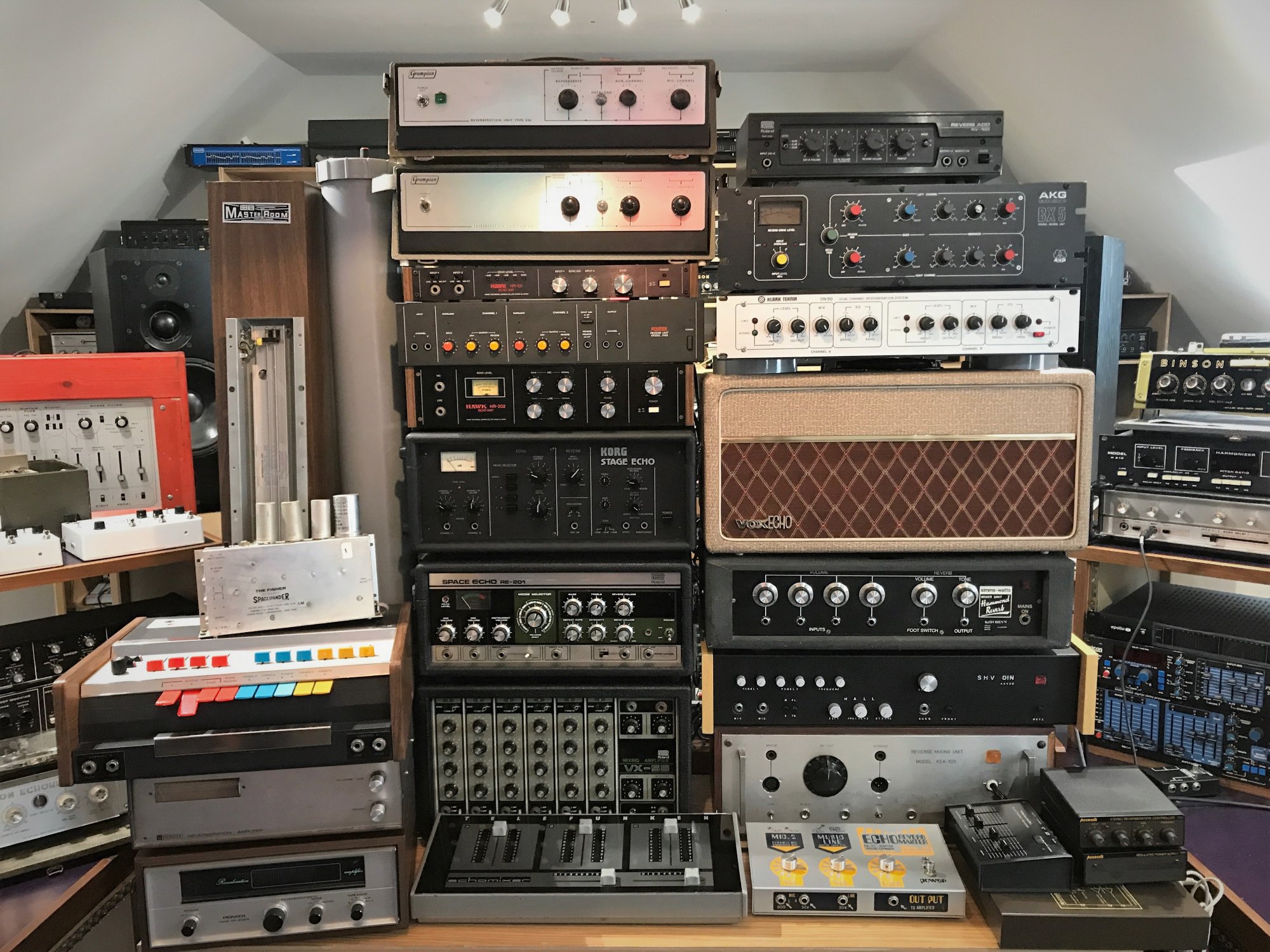

There are probably as many answers to this question as there are different models of spring reverb out there: even the most unpromising cheap plastic box with tiny springs can shine when you’re looking for a different flavour. We happened to have a stack of vintage spring reverbs all in one place so thought we’d put them all against each other and produce:
The Soundgas Snare Springathon – 13 Spring Reverbs head to head with a Roland TR-808 snare…
(You may have already seen this video – we made it a few months ago now – but we’d always intended to add our thoughts about some of our favourite springs from the demo. As we’re looking to do a follow-up soon we thought we’d better finish talking about this one first. If you haven’t already seen/heard it then hit play now, and/or read on as we dig deeper into springs…)
If at any point while you’re reading this you feel the sudden need to get your hands on a vintage spring then you can see our current range here on the Spring Reverbs page, but if you need a particular model or advice then contact us and we will get you the sound you need.
(Also note that this post assumes you know roughly what springs do. If you want to know what is going on inside that tank then a quick trip to the useful (and pretty brief) Accutronics’ “How Reverb Works” page will fill in the gaps.)
Why the Springathon?
We’re often asked by customers which spring reverb would suit their requirements. It’s easy to describe the user interface or physical properties of the gear we sell, but discussing the sonic attributes of a particular piece is less simple. Each person’s perception of sound is subjective and individual, as is our interpretation of the words we use to describe sound. One man’s warm and vintage is another’s dull and lacking definition. I was having a detailed discussion about our various spring reverbs with a customer, when it struck me that we had the opportunity to compare a unique selection of vintage units. Thus was born the idea of the Soundgas Springathon; by no means exhaustive (we are already planning part 2), but simply a quick comparison of as many springs as we could muster at the time. The 808 snare was used, mostly because that was the drum machine to hand, but also as it is a familiar source sound that we can easily replicate in future spring-offs. I’m not going to go into great descriptive detail of the sonic properties of each unit featured – the point of this is that you use your own ears to judge – but I’ll attempt to distil a few thoughts that may be of interest. Boing.
Roland RE-201 Space Echo
Possibly the most commonly-heard external spring reverb effect in recorded music; from dub reggae to electronica/EDM and rock/pop. The ubiquitous Roland RE series of tape echoes have firmly imprinted their sound on recorded music since their launch in 1973. This spring just works in many recording/mix applications, whether tracking guitar/keys/vocals or as a dub/mix send effect. For me, a Roland RE-201 (or 301/501/555) is high on my desert island list of essential vintage studio kit; the tape delay alone is brilliant, but the addition of a versatile spring reverb makes this a must-have.
Telefunken Echomixer
One of the coolest-looking spring reverbs out there, this three channel mixer has two channels which can be fed to a twin spring Hammond tank. Like the Grampian below, this is a germanium transistor-based circuit. These units are extremely versatile and, unlike the Grampian 636, have a smooth high-quality sound – quite un-spring-like when used sparingly. Like the Grampian, they react well to being overdriven and are often chosen for their ability to make guitars sit in the mix. From Grammy Award-winning producers/musicians via internationally-recognised studios, to up and coming engineers, our modified Telefunken Echomixers are becoming a studio staple for those in the know. We service them, swap the 3-pin DIN inputs to ¼” jack sockets, add a trailing ¼” jack plug to the output cable and modify them for switchable wet-only operation.
Pioneer SR-202W / SR-101 / SR-202, Sansui RA-500
It seems strange today that domestic users might want to add extra ambience to recorded music, but that’s exactly what these twin-spring units with groovy back-lit displays were produced for. They have latterly found a stellar following as recording and mix tools – especially since their use was espoused by Tom Elmhirst who used them when mixing Amy Winehouse, Mark Ronson and Adele.
“…the Pioneer on 55‑56 is an old ‘70s‑’80s spring reverb that was made for the domestic market.”
on mixing Rolling In The Deep by Adele (Sound On Sound, Sept 2011).
“I used a lot of external reverbs: a Fairchild 670, old spring reverbs, and a couple 1970s Pioneer Reverberation Amplifier Model SR-202s. They’re old home hi-fi units; they’re not normal! I am not a fan of digital reverb, so I have a few springs I really like… Spring reverb was a big part of the Winehouse record, and it’s in Mark’s sound as well. I use two or three different springs on a track and even on the vocal.” on mixing Mark Ronson’s Record Collection album (Electronic Musician Sept 2010).
At first sight, you’d be forgiven for thinking that these unlikely-looking boxes would find a place in the arsenal of a top flight mix engineer – they don’t even appear to offer a wet-only option. However, when you listen to what the 202 and 202W bring to vocals and acoustic guitar – and the 101 to all sorts of sources – there’s little doubt that these are seriously useable tools that are not replicated in the digital domain. As for getting a wet-only signal for use as a send effect, if you use the left input and right output, you’ll get the reverb-only signal.
Grampian Type 636 (battery and mains powered).
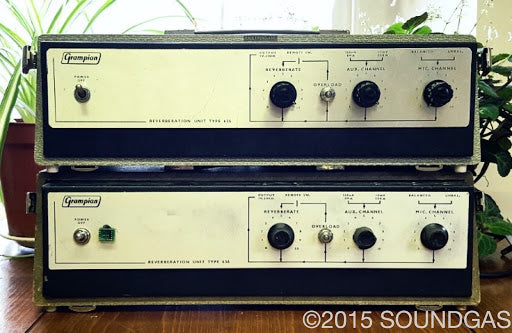
This unprepossessing grey rexine-covered box, with its discrete germanium transistor-based circuit and Gibbs tank played a vital part in the evolution of dub and remixing. Lee Scratch Perry’s use of a Grampian 636 at Black Ark Studios has elevated this unassuming box to near-mythical status. I bought my first battered Grampian because I knew Pete Townshend of The Who used them for distortion (he still has two, modified for balanced ins/outs by Pepe Rush in 1967). If you plug a guitar into the mic input and crank it up you’re rewarded with a huge and magical germanium overdrive/distortion which can turn weedy plugin synths into monsters. It’s not that long ago that you could find a 636 on ebay for well under £100, but those days are gone. We sold one a while back to Al Breadwinner at the Bakery and he immediately demonstrated just how relevant these old units are today: his masterful live, all-analogue dubs are a joy to see and hear. His first dub with the newly-installed Grampian can be viewed here.
We included our two here as they both have different characters – I suspect that no two Grampians are alike due to the tendency of the ageing components to drift out of tolerance or fail entirely. Certainly, those eager to pay inflated sums on ebay for untested/unserviced units should be aware that their new purchase is unlikely to be immediately useable and that it will require some significant attention from a competent tech. That said, I cannot deny that the rewards are worthwhile: these are stunning units.
If you have a Grampian unit to sell – working or otherwise – get in touch and we’ll help you get the best price for it.
Conclusion
What started as a request for a quick demo to compare a couple of our spring reverbs as dub/snare effects quickly mushroomed into an epic… but pretty much as soon as we’d finished we were planning the part 2. There were some significant omissions due to injury and absence (Fisher Dynamic Space Expander, Great British Spring), and we’ve since unearthed several less-common units that we’d never heard before which lend themselves to use and abuse (see our blog about the Japanese Hawk units). It goes without saying that there are still a great many spring reverbs we’ve not been able to include, but our gear-hounds are constantly on the hunt. Some units, such as the superb AKG BX-20 and BX-25, are so delicate that transportation without very careful internal packing risks serious damage, which makes sourcing good examples tricky. Follow us on Youtube or social media to catch the next instalment.
Why Soundgas for springs?
We aim to always have a good selection of spring reverbs in stock with a focus on the less-common units with interesting characteristics – see our full selection here. Our vintage springs are serviced and ready to use – where possible/necessary we modify them to fit in a modern studio workflow and we always have extra tips and tweaks to help the buyer to get the best out of them; we understand not only how they sound and operate, but also how to pack them to survive the rigours of international courier delivery. If the video demo has piqued your interest, or if you want more advice on which unit will best suit your needs, then please get in touch.
==========
Tony Miln is the co-founder (& Head Gear Head) of Soundgas. See/hear him in action on Instagram.

